CLOUDS, CLOWNS AND DISTORTING MIRRORS
by Prescott Muir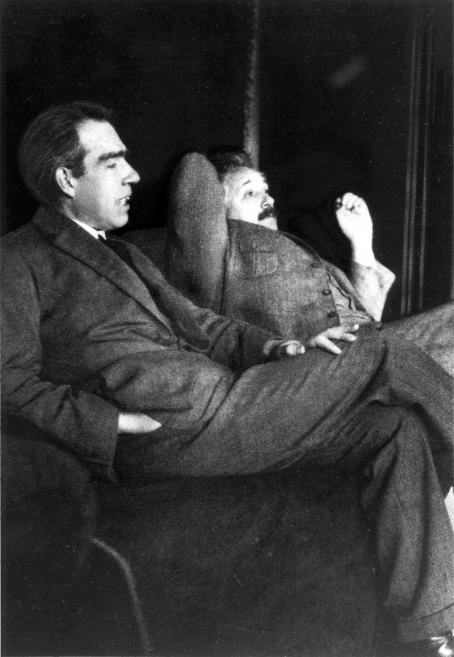
ALBERT EINSTEIN AND NIELS BOHR had a running 25-year debate about whether the universe was predictable and deterministic (as Einstein offered) or unpredictability and prone to accident (as rebutted by Bohr). This grew out of Einstein’s commitment to find a global unifying theory grounded in the discovery of the singular subatomic building block upon which to explain the universe. Conversely, Bohr had a greater willingness to accept the inexplicable complexity and indeterminacy suggested by quantum mechanics. Was this an early progenitor of the post-structuralist conundrum of rhetoric versus scientific proof? Their collaborating physicist at Princeton, John Archibald Wheeler, coined the title “It from Bit” as a mediation between the two positions, envisioning a universe that in “all it contains [it] may arise from the myriad yes-no choices of measurement [bit].”¹ Yet this is a system able to yield to accident and the distorted influences of perception, thus suggesting a transcendence beyond the otherwise unequivocal positions.
Looking back, Wheeler’s idea of “It from Bit” seems to me a logical extension of the ideas of Christopher Alexander that I applied in the studio while just a young undergraduate student at USC. At the time, the work of Alexander seemed like a way to reconcile the influences of determinists like Alfred Caldwell, Konrad Wachsmann, Ralph Knowles, and Ian McHarg with that of a young maverick, Frank Gehry; at that time, all of these figures were teaching at USC. Mies van der Rohe’s ideas, as taught by Caldwell just two years after Mies’ death, seemed restrictive, and the Modernist canon seemed calcified while Gehry’s ideas were disconnected, inarticulate and lacking the refinement and subtlety of Mies. A student would be understandably confused. Could there be an element of predictability in design where you concede authorship and the trappings of ego in favor of some antonymous and indeed anonymous system as in, say, one of Breton’s automatic writings? Or was design found in the liberating prospects of one more in a succession of avant-gardes to undo precedent and convention, as Gehry would have us believe?² Truth may reside in both camps, but how to enable the psychic connectivity of the built Gehry without undoing the particularity of craft and the programmatic elements of a useful object so missing in his work?
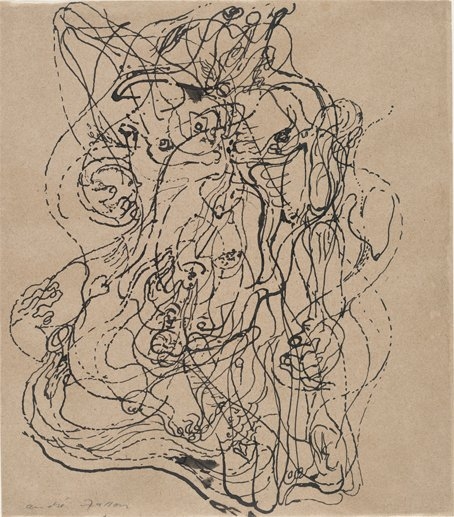
Looked at differently, that is accepting and contributing to the progression of technology and the learned elements of making both mental and physical without sacrificing the mysteries born of complex human and nature-based events.
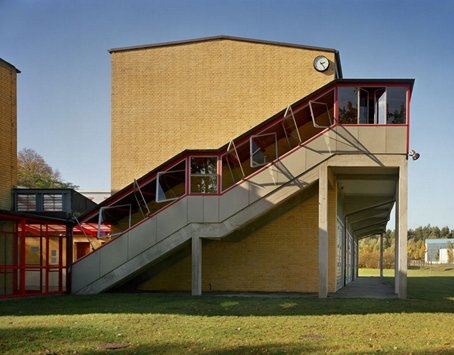

Later, following Gehry’s lead in dispelling the myths of Modernism, I researched and wrote about the work of Hannes Meyer and detailed why he had been so disparaged by Gropius and Mies. At the time I didn’t fully appreciate the deconstruction I was setting loose in the question that would work to undo Mies and the accepted narrative on Meyer. To my surprise, I found in Meyer’s writings, built work and influence as director of the Bauhaus an architectural example of Breton’s automatism and a reasonable precursor to Alexander’s deterministic methodology. In Meyer, I was hoping to find that similar singular atomic building block for design. So much of his work at the Bauhaus and subsequent brigades in Russia seemed though imbued with a persuasive polemic, nonetheless devoid of spirit.³ However, I’ve observed in the recently restored ADGB Trade Union School in Bernau the compositional elegance and thoughtful ordering of manufactured elements that to some degree diverge from his rhetorical rejection of conscious design. Similarly, Le Corbusier’s provocative juxtaposition of the Delage “Grand-Sport” racing car with the Parthenon in the Vers Un Architecture belies the careful compositions of his maison-atelier Ozenfant that is included in the same publication.⁴ Curiously, Meyer was deported from Russia because of his formalism, whereas he was dismissed from the Bauhaus directorship because his work didn’t connect with the political and cultural realities of the time. This may have all contributed to his relative obscurity. From this example, and similar to the debate in physics, I have struggled to find operating mechanisms whereby the predictability of the detail and technological progress, as in Meyer and Mies and the simple patterns of use in Alexander, could be translated into a provocative and nuanced compositional whole greater than its parts and initial impulses. That is, a whole that embraced both the complexities of the cultural realm and the elements of chance found in urban conditions yet still one that could still reference meticulously crafted detail enabling the corporeality of experience.
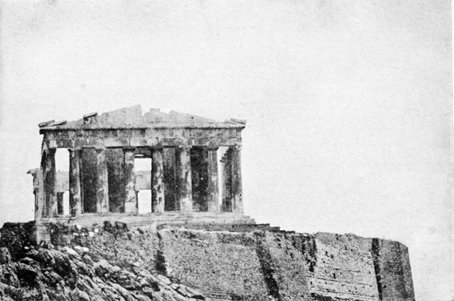
Wheeler’s information theory is based upon a computational strategy of yes/no decisions that seems ideally suited to the digital age yet must seem to architects a mere recitation of Mies’ well-known refrain “less is more.” Indeed, Wheeler invoked Mies to describe the limitations on the whole derived from a preoccupation with the particular. Wheeler preferred the phrase “more is different” in that his theory, though based upon discrete measurements, could lead to greater and potentially unlimited variability in the whole, or the bit being disguised or at least significantly distorted in the whole.⁵ The architecture of the last 25 years, the lion’s share of my professional career, has, as Mary McLeod observes “lost its faith in social regeneration that the Modern movement had,”⁶ and has retreated from the possibility of deterministic sources to that of the simple animated disembodied projections in light that we find today. Though my reference point has typically been the work and words of other architects, coincidentally, Wheeler provides an equitable benchmark for my ideas outside of the prevailing discourses in architecture. Curious that Wheeler would reference Mies van der Rohe in describing his “It from Bit” theory of physics. As previously mentioned, shortly after Mies’s death, I studied with Alfred Caldwell, who was a colleague of Mies’s at IIT before relocating to USC. I felt Caldwell had channeled Mies, even adopting his mannerisms of impeccably tailored suits, restrained lifestyle, serious demeanor and, in his case, the constant cigarette in hand as opposed to Mies’ cigar. Of all those early influences, Mies seems the most enigmatic to which I find myself returning, through a clouded memory, unable to shake his web of influence. In school his method seemed suffocating, yet as I began practicing in LA and Utah and later teaching, I found myself constantly tripping over traces of him or, as Beatriz Colomina observed,“the more I found myself [inside Mies’ work].”⁷ I felt the tangible reminders constantly, as my office was located just a block from the office of Craig Ellwood (who was so influenced by Mies) and John Sugden, a friend and teaching colleague who’d studied and worked under Mies. I continue today to help John’s widow with the repairs to his Miesian house in the mountains above Salt Lake, with its elegant plug-welded steel joints, zipper-gasketed glazing and original Barcelona chairs.
The Mies’ teaching method as interpreted by Caldwell, allowed for the concurrent method of working the whole to the detail and detail to the whole in some elegantly choreographed dance. The assignments required discipline and rigorously executed hand-drawn details using ink on Strathmore boards. You made a mistake, you started over. In reflection now 40 years later, I realize the detail is more readily extrapolated into the whole when the whole is considerably reduced, as in Mies’ buildings. Because Mies limited external influences, he was able to elevate the importance of the classical rule of proportion, the refinement of materials and the integrity of the detail. It seemed to me that because he had limited the urban, climate and cultural engagement of his buildings, other elements were allowed to emerge. This is much like a Chuck Close painting and its imposition of the grid as a means of liberating himself from the influence of the existential painterly gestures of Willem de Kooning.⁸ Just as in Close’s enabling use of the grid, Mies held his buildings back from the street edge in negating contextual references, cladding them in glass-defying weathering and the passage of time, and elevating them from the ground plane to disassociate from nature. In his high-rise buildings, you literally enter the building through the “reveal” or joint between nature and man-made, that negative space between the upper mass of the building and the ground plane. The reveal in the Modernist convention was used to differentiate between disparate conditions, in this case, between the predictability of the material and the variability of nature. Even the materiality of the buildings, like the furniture, was hidden behind the more expressive qualities of chrome, bronze, onyx, book-matched veneers and finely dyed leathers as Kengo Kuma, observed “to show nature as a symbol, this skin can be chosen.”⁹
It is said that architects project their own scale into buildings as we find the diminutive scale of Wright’s buildings a reflection of his 5’8” height.¹⁰ For Mies it was his personality as much as physique, although that has also been much spoken about. He disengaged from family and even lived in the Blackstone Hotel for three years in Chicago before finding an apartment, keeping his treasured Kandinsky and Klee painting under his bed. His daughter, Georgia questioned this indifference and disassociation towards her and her siblings, “What was he hiding from behind his newspaper, behind his drawings?” Though Mies is so identified with Chicago, he never really embraced the architectural community, culture and history of the place.¹¹ It seems that Mies was actually quite true to character in his reductive acts that allowed other things to emerge more meaningfully both in character and work. Just as austerity allowed his work to dominate his personal life, the reduced influence of the public domain allowed the detail greater significance in his architecture.
The doing of architecture seems to have its own logic that now seems borne up by quantum theory. Mies’s idea of atomization may have mimicked Einstein’s desire for certainty and thus became the essence for Modernist utopian thinking. The idea of the importance of the particular to design may have its origins in the Greek refinements, Roman miniaturization and more succinctly in the Islamic aesthetic theory of atomization. Can this long history and reoccurring idea of the centrality of the detail as a potential determinant for design have relevance today? The challenge in reflection is the unavoidable historical perspective of Derrida, that one cannot escape that which renders any empirical attempt at absolutes utterly impossible.¹² To some degree Mies may have foreshadowed the nihilism that is attributable to Derrida in his refusal to engage. Yet in architecture the promise of early Modernism and its fealty to the empirical , its resistance to authorship in order to empower utility and it’s hope to improve the general welfare still seems plausible. As Einstein said, “God is subtle but he is not malicious.”¹³
Our work has endeavored to provide a platform for engagement that transcends in an assertive way the nearsighted science of sustainable technologies on the one hand and the rhetoric of infinitely adaptable surface treatments on the other. Unlike the post-structuralist critique that each act of will invariably is accomplished at the expense of another rendering all acts irreconcilable and thus equivalent, I propose an architecture based upon simple acts of observation and measurement or what Niels Bohr calls registration that can be accumulated while allowing adjustment and assemblage in a cloud of probability where certainty and uncertainty may coexist. The response to a certain instance or instrumentality derived from simple observation does not necessarily preclude other options and may invite serendipity. This is not an architecture of absolutes yet does not close out it’s possibility and thus noticeably veers from the historical utopian origins of Modernism and its provocations.
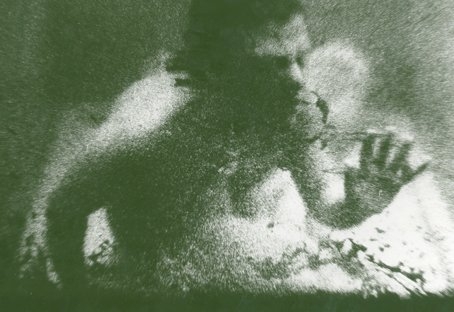
In architecture, there currently is little talk of truth , beauty or absolutes of any kind. Can this process that accepts the credibility of measurable outcomes rescue the possibility of absolutes if only at some primitive level? I think architecture can and should afford more nuanced meaning than mere reduction to the authenticity of the architects gesture or churlish infatuation with one’s body as in Mona Hatoum’s work. Yet as long as we reside in bodies it is the point of mediation with the material world. Juhani Pallasma observes in a similar perspective, “architecture cannot however become an instrument of mere functionality, bodily comfort and sensory pleasure without losing its existentially mediating task.”¹⁴ Probably at the detriment of representing our work in a cohesive way, it has endeavored to resist the formulaic as well as figurative impulses. Thus, each project is “different,” yet I hope there is a thread of continuity that comes with the cloud of probability derived from a dependence upon measurables. I would characterize our work as one of abduction rather than induction. That is, the body of work is based upon the reconciliation of myriad small issues of certifiable origins. The grouping or assemblage of these doodads or proofs works to undo the idea just as the idea can’t hope to merely reflect the particular. Each project, in being grounded in the programmatic and situational, resists the globalization found in the replicability of mere idea-based designs. However, the method itself is certainly not place-bound.
An inductive approach is one based upon a hypothesis in search of program resulting in content that is transported in an alienated vessel. Indeed, the inductive or preconceived models speak of the English poet, John Keats’ notion of the sublimely creative act as some “Dionysian frenzy.” What Romanticism initiated as epiphanic rapture or a foil to the historical becomes in our own time an epistemic rupture.¹⁵ More specifically, the inadvertent gesture is now masquerading as some refusal to act that has become the common currency in both practice and the academy. Ironically, the inductive approach invites the very commercialization or reification that gesture-based designs intended to negate. The inductive work invariably becomes the “bloody Doric column” barely concealing itinerant political forces.
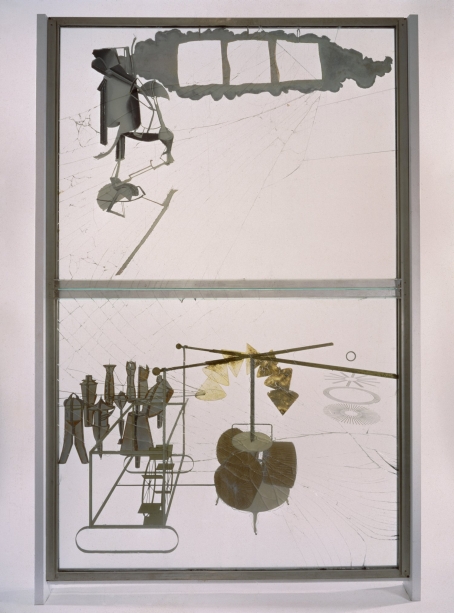
Paul De Man observed in reading Confessions, Rousseau’s preoccupation between useless facts and pure fiction that experience always exists simultaneously as both fictional discourse and empirical event [with the impossibility] to decide which “one is the right one.”¹⁶ An architec- tural equivalent would be a demonstrable proof that contains both a compositional quality of proportional determinants of beauty as well as measurements found in the material. A concession to relativism is a denial of architecture’s redemptive capacity and extinguishes any opportunity for the regeneration found in tropes. As ecosystems are facing collapse, the cultural implications for sustainable technologies are as important as ever. Carlos Ginzburg has an apt characterization “…sources are neither open windows [to truth] as positivists would argue or fences obstructing truth as the relativists argue but [are] distorting mirrors….”¹⁷
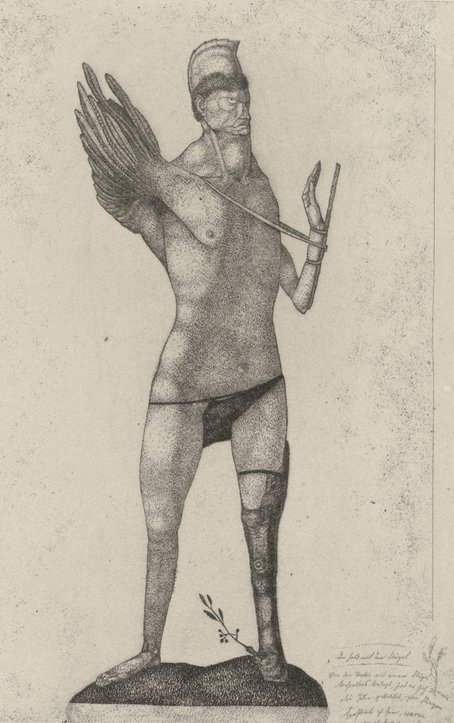
During the formative years of 20th-century Modernism, Bertolt Brecht suggested that “the bad old things have protected us from the bad new things….”¹⁸ In light of Derrida and the post-structuralists, the bad old things have been undone and cannot provide a reliable source nor continuing threat. So what is a reliable point of intervention or entry into the cultural realm that avoids the associated traps of technology found in Corbu’s Delage racing car? We are in a period in which the architectural world has lost its bearing and entered some state of lost cognition or historical amnesia. Just as a patient suffering brain injury, we must recreate our reality to learn to walk and to learn to build with confidence again. Those of us who do architecture and who do build, we understand the certain undeniability of the natural world: wood has a specific grain, steel has certain thermal characteristics and both subject and material can and do matter.
I am willing to acknowledge that the faceted details of assemblage can contribute to Wheeler’s cloud of probability as it expands by accident as much as purpose into a complex and varied whole. This doesn’t preclude a simple point of origin, the shadow of which may be perceived in the whole. I am willing to believe that sources may exist and that each, though distorted, may be reflected in the “it to bit” just as in the “bit to it”. The appropriate positioning of architecture is a suspension of absolutes, utopias and naïve positivism as much as an equal suspicion of form derived from the purely intuitive or the existential gesture of the author as though it were some authentic act worthy of celebration. This is an architecture calibrated somewhere between the extremes of the feel-good determinism of New Urbanism or the vacuous formalism of parametricity. The purely intuitive and utopian premise is extinguished in favor of a series of accumulated proofs and clues that merely imply a plausible projection into the complexities and accidents of the urban/cultural realm. If reflected impressions and obdurate registration in the fractures found in Duchamp’s The Large Glass provide a reliable paradigm for engagement, then the resultant artifact thus deflecting preconception will imply both the possibilities in an open-ended proposition, a proposition for architecture.
Notes:
1. John Archibald Wheeler with Kenneth Ford, Geons, Black Holes and Quantum Foam (New York: W.W. Norton and Company, 1998) p.339-342.
2. Renato Poggioli, The Theory of the Avant-Garde (Cambridge, MA: The Belknap Press of Harvard
University, 1968), p.192.
3. Prescott Muir, “Automatic Determinism or the Devil in Mr. Meyer,” On Architecture, the City, and
Technology, ed. Marc Angelil (New York: Butterworth Architectural Press, 1990), p.58.
4. Le Corbusier, Vers Un Architecture (New York: Praeger Publishers,1960), p.125.
5. Wheeler, p.340-341.
6. Mary McLeod, “Architecture and Politics in the Reagan Era: From Postmodernism to
Deconstructivism,” Assemblage 8, ed. Michael Hays (Cambridge, MA: MIT Press, 1989), p. 45.
7. Beatriz Colomina, “Mies Not,” The Presence of Mies, ed. Detlef Mertins (New York: Princeton
Architectural Press, 1994), p.194.
8. Mira Locher, Traditional Japanese Architecture, (Tokyo: Tuttle Publishing, 2010), p. 8.
9. Charlie Rose, video interview with Chuck Close, 13 Mar. 2003.
10. Changing Parts, Mona Hatoum, 1984 courtesy of White Cube Art, LLP
10. Edgar Tafel, Years with Frank Lloyd Wright (New York: Dover Press, 1979), p. 20.
11. Franz Schulze, Mies van der Rohe, A Critical Biography (Chicago: The University of Chicago Press,
1985), p. 218.
12. Derrida, dir. Kirby Dick and Amy Ziering Kofman, Jane Doe Films, 2002.
13. Wheeler, p. 25.
14. Juhani Pallasmaa, The Eyes of the Skin (Chichester, England: John Wiley & Sons, 2005), p. 62.
15. Ihab Hassan, The Dismemberment of Orpheus (Madison, WI: The University of Wisconsin Press, Ltd.,
1982), p. 7; note #11, p. 303.
16. Paul De Man, Allegories of Reading (New Haven, CT: Yale University Press, 1979), p. 293 .
17. Carlo Ginzburg, History, Rhetoric, and Proof (Hanover, NH: Brandeis University Press, 1999), p. 25.
18. Carlo Ginzburg, The Judge and the Historian (New York: Verso, 1999), p.16.